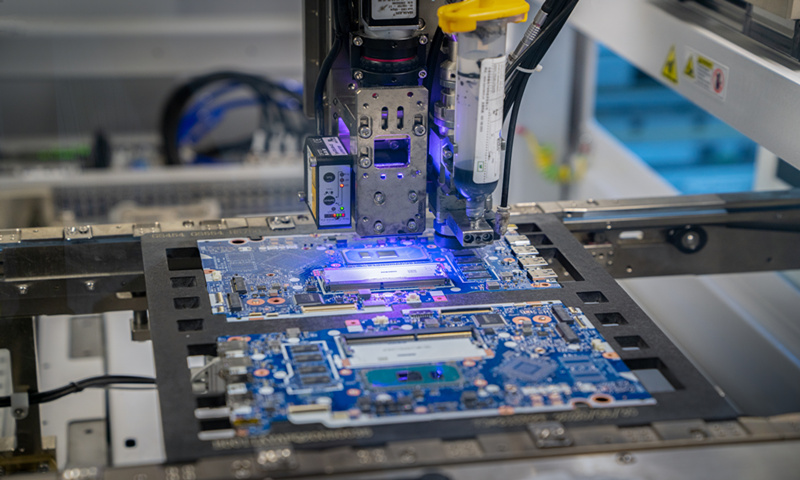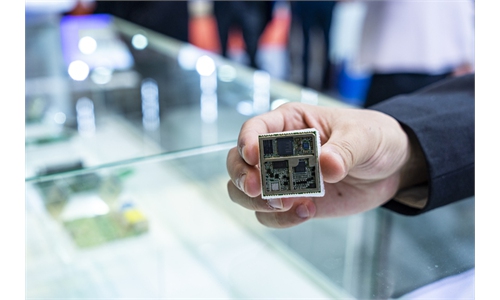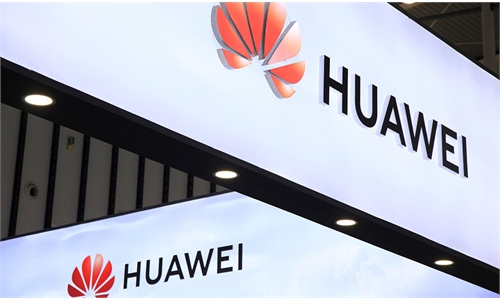
A chip manufacture machine Photo: VCG
China's domestic-made ion implanters can now produce 28-nanometer chip wafers, breaking a bottleneck in the nation's chip sector amid a technology stand-off with the US.
According to a statement from China Electronics Technology Group Corp (CETGC) sent to the Global Times, the development will help China achieve self-efficiency in chipmaking and ease the pressure from a technology block by the US.
An ion implanter is a key device used in the process of chipmaking. CETGC said that it has achieved high-speed wafer transmission and independently developed all ranges of ion implanter applications.
"Ion implanters are an important part of the chipmaking process, and they can facilitate the mask aligners to make wafers," Geng Bo, a vice secretary-general of the China Solid State Lighting Alliance, a semiconductor industry association, told the Global Times.
According to Geng, China did not have its first ion implanter until 2017, and the development of ion implanters covering 28-nm wafers is a crucial step in the advance of chipmaking technologies.
Under the impact of geopolitics, especially the threat of technology cut-offs from the US, the Chinese government, investors and companies are all actively promoting chip localization to secure supply chains.
"China will for sure increase investments in semiconductors and import more chipmaking machines to strengthen its capacity to produce chips," Lin Meibing, chief analyst of Wit Display, told the Global Times.
Last year, China imported 11,619 devices and machines to produce semiconductors at a cost of $13.66 billion, according to customs data. The value of imports grew 31.2 percent compared with 2019.
The government has designated self-reliance in technology as a strategic goal, and it aims to realize a chipset self-sufficiency rate of 70 percent by 2025, media reported.



